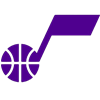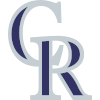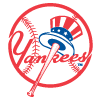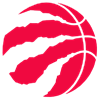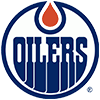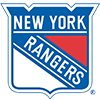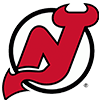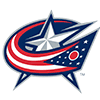I can confidently say that the massive update to the top 400 prospect rankings that went live late Monday afternoon was the most time-consuming in-season update I've ever completed. This was my first opportunity of the season to dive deep into all 30 farm systems and evaluate all of the relevant prospects while uncovering as many pop-up guys as I could. I didn't have the time to do this in June or early July, as draft prep was my sole focus during that stretch, and the sample size wouldn't have been large enough in May. Additionally, the three rookie leagues (Arizona Complex, Florida Complex, Dominican Summer) have been up and running for a long enough time that we can start to evaluate the players in those leagues. There was more to dig up this year than in past years, as there were more pop-up guys than ever, as we knew there would be after the long layoff.
Preseason expectations for a lot of these guys have essentially gone out the window. We may have thought we knew how good the top 100-200 prospects were, but now is the time to come to grips with the fact that we were wrong about a lot of guys, whether it be too high or too low.
I won't be able to touch on every noteworthy riser, faller and addition to the rankings, but I'll try my best here to hit on the guys I think are most interesting. Please use the comments section
I can confidently say that the massive update to the top 400 prospect rankings that went live late Monday afternoon was the most time-consuming in-season update I've ever completed. This was my first opportunity of the season to dive deep into all 30 farm systems and evaluate all of the relevant prospects while uncovering as many pop-up guys as I could. I didn't have the time to do this in June or early July, as draft prep was my sole focus during that stretch, and the sample size wouldn't have been large enough in May. Additionally, the three rookie leagues (Arizona Complex, Florida Complex, Dominican Summer) have been up and running for a long enough time that we can start to evaluate the players in those leagues. There was more to dig up this year than in past years, as there were more pop-up guys than ever, as we knew there would be after the long layoff.
Preseason expectations for a lot of these guys have essentially gone out the window. We may have thought we knew how good the top 100-200 prospects were, but now is the time to come to grips with the fact that we were wrong about a lot of guys, whether it be too high or too low.
I won't be able to touch on every noteworthy riser, faller and addition to the rankings, but I'll try my best here to hit on the guys I think are most interesting. Please use the comments section of this article to ask me about anyone I may not have touched on or send me a message on Twitter.
Julio Rodriguez and Bobby Witt
It's like flipping a coin for who should be No. 1 and who should be No. 2. If you prefer Witt, I totally get it. Chris Welsh mentioned on the podcast I did with him this past Thursday that he's heard rumblings that we could see Witt debut in the coming days, and that makes sense to me. The Royals are one of the more player-friendly organizations out there and I think they'd be very open to Witt making the roster out of spring training next year. If they would be open to that, then there's no service time reason to not let him come up this year, as you get him for the next six years either way. I would also expect them to lock him up to a long-term extension, so essentially he'll be up when they think he's ready, which could be this week or next. Rodriguez will head to the Arizona Fall League and will head to Triple-A at the start of next season. He will be a very tough player to value in 2022, given that the Mariners have no shame. He could debut in late April (service-time manipulation) or early June (Super Two manipulation), it's tough to say.
After Rodriguez and Witt, I think there are two mini tiers:
TIER 2A
| 3 | Brennen Davis |
| 4 | Riley Greene |
| 5 | Spencer Torkelson |
| 6 | Adley Rutschman |
| 7 | CJ Abrams |
| 8 | Marco Luciano |
| 9 | Noelvi Marte |
| 10 | Corbin Carroll |
| 11 | Luis Matos |
| 12 | Anthony Volpe |
TIER 2B
| 13 | Josh Jung |
| 14 | Josh Lowe |
| 15 | Robert Hassell |
| 16 | Jasson Dominguez |
| 17 | Tyler Soderstrom |
| 18 | Austin Martin |
| 19 | Pedro Leon |
| 20 | Zac Veen |
| 21 | Jordan Walker |
| 22 | Brayan Rocchio |
I've spent plenty of time in articles and podcasts discussing most of these guys, but there is only one player in the top 40 who has any green up arrows next to his name, and that is Brayan Rocchio. He was given an aggressive assignment to High-A to start the year, and he hit .207/.250/.310 over his first 20 games. Since then, he is hitting .283/.368/.488 with 11 home runs, nine steals, a 21.3 K% and an 8.2 BB% in 65 games, 21 of which have come at Double-A. Rocchio doesn't turn 21 until Jan. 13, so he will likely be the youngest or one of the youngest hitters at Triple-A next summer. It was always known that Rocchio was an advanced hitter for his age and that he had some speed, but the eventual power output was up for debate. I thought he'd be a 15-20 homer guy eventually, but I didn't think he'd unlock that type of pop this early. It's an awesome development for Cleveland's shortstop of the future.
12th homer of the year from Brayan Rocchio pic.twitter.com/rR7Mwo0OLZ
— Justin L. (@JL_Baseball) August 15, 2021
It's scary how similar his swing is to lindors. Both switch hitting shortstops pic.twitter.com/SJSe5BPyDK
— Ben Nelson (@bjnsjn) August 20, 2021
With Rocchio moving up, it's worth discussing the one player in the top 40 with a red down arrow next to his name, and that's Rocchio's future double-play partner, Tyler Freeman. Long one of my favorite prospects, Freeman's hit tool is still superior to Rocchio's (and almost every prospect), but he underwent labrum surgery earlier this month and last played July 25. I'd love to have seen what Freeman would have done in a full, healthy season, but I think it's safe to say he didn't show what Rocchio showed from a power development standpoint or a base-stealing standpoint. I still think Freeman can be a .300 hitter who hits 15-20 home runs and steals 12-18 bases, but the power/speed aspect of the profile isn't as substantive as it is for Rocchio, who is 19 months younger and isn't recovering from a serious injury.
I had Jordan ranked 127 at the start of the minor-league season, which I assume is higher than most people had him, and now he is up to 37. That may seem like quite the overreaction to just 23 games, but if you'd told me back then, or even back at the time of the 2020 draft, that Jordan would strike out at a 17.1% clip in the complex league while getting to power (.304 ISO) in games and then hit two home runs with a 4:2 K:BB in his first 18 plate appearances as an 18-year-old at Low-A, I'd have ranked him as a top-10 fantasy prospect in his draft class. I was obviously bullish on him, but I thought he'd go through some growing pains this year and then break out in 2022 or 2023. He's well ahead of schedule and is one of the best teenage power-hitting prospects in baseball.
Yorke is a completely different type of prospect than Jordan, and he is eight months older. While Jordan opened in complex ball, Yorke opened at Low-A and has already earned a bump up to High-A. He jumped over 100 spots from 177 to 54 on this update. Yorke's hit tool has been as advertised, but the surprise is that he is already tapping into double-digit homer pop. I don't buy the stolen bases being a big part of the profile at the highest level, but he could be a No. 1 or No. 2 hitter in the majors while Jordan could be a No. 4 hitter and Marcelo Mayer could be a No. 2 or No. 3 hitter. This should be a really fun time to be a Red Sox fan.
Gil's command is still a big question mark long term, but he's got this competitiveness and confidence on the mound that I love. His fastball is at least a 70-grade pitch, and his slider plays well off it. His changeup is still a work in progress. One of the best things, maybe the best thing, you could say about any pitching prospect is that they are big-league ready. Proximity is paramount, as we never know when a guy is going to suffer that devastating arm injury that sets back his development a couple years. For this reason, Tanner Houck would have ranked inside the top 50 if he were still eligible, and Gil moves up to No. 51. I'll be targeting both guys in redraft leagues next year if the price is right.
Pomares really got better during the pandemic. He got stronger and he got much better at driving the ball with authority. He just turned 21 and boasts a 36.8% hard-hit rate, which is elite for any minor leaguer, let alone one who is still in the lower levels. It's obvious that he is playing a little over his head (~.450 BABIP), and his 25.0 K% and 5.9 BB% lead me to expect some struggles either at High-A or Double-A, but it is now clear that there is enough juice in his bat for him to profile just fine in left field, which is his likely home.
Ashby looks like a total stud. I was tempted to bump him even higher than No. 70 — there's really not much separating him from Gil and his secondary offerings are actually better than Gil's. We just don't know how real Ashby's command gains have been over the past couple months and it's unclear when the Brewers will turn him loose as a true starter, ideally in a five-man rotation. I've already added Ashby in super competitive 15-team NFBC leagues on the off chance he cracks the down-the-stretch rotation because I think the upside warrants it. If it looks like Ashby could crack next year's big-league rotation, he'll be a major priority in 2022 drafts.
I'll take a big fat L on Jameson, who enters the top 400 for the very first time at No. 71 on this update. While I knew the stuff was loud, I was too quick to write him off as a future multi-inning reliever due to his size (listed at 6-foot, 165 pounds) and sketchy command prior to this season. He has a 6.4 BB% on the year and has struck out double-digit batters in four of his last six starts, with his most recent four starts coming at Double-A. Jameson has elite whiff rates on his slider and curveball and his whiff rates on his fastballs and changeups lag behind. I think his pitch usage is worth monitoring. He's only throwing his breaking balls 30% of the time, so upping that to 35-40% could help. One big thing I love about Jameson is that he throws five pitches (when counting both fastballs) and all five average over 80 mph. That will be huge for him in the majors, as it gives hitters less time to make the right swing decision. At the end of the day, he could have a 70-grade slider and a 70-grade curveball with a couple other 60s mixed in. He's one of those guys who could get big-league hitters out right now, and I think the Diamondbacks will be aggressive with getting him into the rotation early next season, rather than have him wasting bullets on the farm when he has little left to prove. My friend Geoff Pontes at Prospects Live was the one who turned me on to just how devastating Jameson's stuff has been this year, and I'd strongly recommend subscribing to their Patreon so that you're also getting this valuable intel.
#Dbacks right-hander Drey Jameson set a new personal high-water mark with his 12th strikeout of the game for @sodpoodles. pic.twitter.com/SKluZHM4mk
— MLB Pipeline (@MLBPipeline) August 18, 2021
Prior to the update dropping Monday, I made it clear in as many ways as I could (on the Prospect Podcast, on Twitter, in the comments section of my last article) that you needed to go grab Harris ASAP. I hope you were able to, because the train has left the station. He joins Jameson as a prospect who went from unranked to inside the top 75. I know the numbers on the season are gaudy (.337 AVG, 16 HR, 24 SB), but I want to make it clear that this ranking has very little to do with his stolen base total. It's Harris' bat that I'm in love with, and while he may end up stealing double-digit bases as a big-league first baseman, that would just be the cherry on top of the sundae. His batted-ball profile is exquisite — linedrive rate over 25%, groundball rate under 40%, opposite-field rate over 32%. His control of the strike zone is elite (15.6 K%, 10.3 BB%). But what made me go all in was watching how quick his hands are and how easily he controls the barrel. No minor-league hitter was more underrated a week ago, and Harris could finish the season well inside the top 50 at this rate.
#TexasRangers infield prospect Dustin Harris belted a pair of loooong homers in the @GoWoodDucks doubleheader opener. pic.twitter.com/xFmhBNedtV
— Minor League Baseball (@MiLB) July 22, 2021
Bradley has thrown exactly five innings in 13 straight starts between Low-A and High-A, and he has a 1.52 ERA, 0.78 WHIP and 74:16 K:BB in 65 innings over that stretch. An athletic 6-foot-2 righty who won't turn 21 until March, Bradley has a mid-to-upper-90s fastball and a hard slider with a third-pitch changeup that lags behind but should get to where it needs to be for him to profile near the top of a rotation. The Rays always seem to have endless pitching on the farm, but Bradley and Ian Seymour are the cream of the crop after Shane Baz.
The Dodgers have a new top pitching prospect in Knack, who slots in at No. 107 on the top 400. The story with Knack in the 2020 draft was that he was a couple years older than the other top college arms, but he had arguably the best command/control in the class. He has maintained the velocity jump he saw in his final year at East Tennessee State, sitting in the mid-90s with his fastball. Knack throws four pitches, and they could all be 55-grade offerings or better. He's essentially George Kirby lite and he could beat Kirby to the majors. With Bobby Miller ominously sidelined with an unspecified injury and Ryan Pepiot dealing with significant command issues, Knack is the Dodgers' best bet to step into the rotation and excel if there is a need next season.
I've been really impressed with Mayo's body (I thought he'd add bad weight, but he's surprisingly lean despite being 6-foot-5) and his contact skill (16.7 K%). As a bigger teenage slugger, he wasn't going to be assigned to Low-A right away as a 19-year-old, but he quickly forced his way to that level. On the season, he is hitting .307/.417/.554 with six home runs in 32 games. The game power should only continue to improve, and if he can keep his strikeout rate in a manageable range, I may have to eat my words on criticizing the Orioles for passing on Austin Martin in an effort to save money so they could give Mayo an over-slot $1.75 million deal in the fourth round of last year's draft.
The Dodgers system was so stacked at every level coming into the year that Leonard was a bit of an afterthought, but no longer. He has played shortstop, second base and third base this year at Low-A and High-A and is hitting .308/.410/.566 with 18 home runs and a 22.7 K%. He has also been hit by 14 pitches. His 23.1% hard-hit rate doesn't really back up his power output, which is also the case with Miguel Vargas, who is the new top prospect in the system. Nonetheless, it's hard to ignore what Leonard has done as a 20-year-old, and he lines up to spend most of his age-21 season at Double-A.
Mendez wasn't on my radar coming into the year, but no 17-year-old has done more to put himself on the map early in the rookie ball season. He essentially never swung and missed on pitches in the zone in the DSL, quickly forcing a promotion to the complex league. His strikeouts have spiked in Arizona, but he's still doing damage. The really exciting thing about Mendez is that his body is uber-projectable. He is listed at 6-foot-2, 175 pounds, and I think there's room for him to add 15-20 pounds of good weight in the coming years. If his plate skills remain as good as they seem right now and he grows into impact power, he could be an offensive monster.
Vivas, a skinny, 6-foot Dodgers infielder (second base and third base) has one of the best hit tools in the lower levels of the minors. He always struck out at excellent clips in rookie ball, but to log an 11.2 K% while slashing .311/.389/.515 in one's full-season debut is pretty eye-catching. Vivas hit just two home runs in 105 games prior to this season, and he has already clobbered 13 long balls in 83 games as a 20-year-old, so we don't need to hope the power comes — it's already here.
Vasquez has an absolutely disgusting breaking ball. I've seen it called a slider and a curveball. Whatever you want to call it, it's a spin monster and hitters have no chance against it. He also has a mid-90s fastball of both the two-seam and four-seam varieties. If his command gains since jumping to High-A are somewhat legitimate, he's got a chance to be really special.
Some breaking balls from Randy Vasquez, who threw 6 shutout innings (1 H, 2 BB, 10K) for Hudson Valley last night. Per the data from his stint in Tampa, this pitch averaged about 3100 rpm (yes, even in June and July). pic.twitter.com/tcOON0BSGs
— Lucas (@DBITLefty) August 4, 2021
Kent has a couple unfair breaking balls that he probably doesn't throw often enough, given that his low-to-mid-90s fastball is just OK. He's got good size (6-foot-3, 208 pounds) and has a 1.20 ERA, 0.83 WHIP and 45:7 K:BB over his last six games (30 innings). There's not much buzz surrounding him at the moment, but I'm in love with his breaking balls and think he's got a very high ceiling if he can optimize his pitch mix.
Our Pitcher of the Week, @kent_zak! #StraightUpTX pic.twitter.com/t0WQ1CG9bH
— Rangers Player Development (@TEXPlayerDev) August 10, 2021
The Catcher Conundrum
We are witnessing a catcher renaissance in the minor leagues, and as a result, I have a whopping nine catchers ranked in my top 110, and that doesn't even include less-heralded guys I love like Jeferson Quero and Bryan Lavastida, who are in the 175-200 range. Let's say Tyler Soderstrom moves off the position in order to get his bat to the majors quicker and Diego Cartaya moves to the outfield for similar reasons. That still leaves us with seven catchers inside my top 80. That seems like too many, but I struggle to see how I can justify having those seven (Adley Rutschman, Francisco Alvarez, Henry Davis, Gabriel Moreno, Keibert Ruiz, Austin Wells, MJ Melendez) much lower than I have them from a talent standpoint. One argument would be, if there are more good hitting catching prospects than we've had in recent memory, then it's a less scarce commodity, and therefore we can downgrade them across the board. I kind of buy that thinking. For instance, you might be able to go to your waiver wire right now and grab Quero or Lavastida, and they're super talented prospects, so why overvalue the guys you can't freely scoop up? Obviously in leagues where around 30 catchers are started, we need to strongly value these guys, but I really struggle with how to value these excellent catching prospects in leagues where only 20 are started. One easy piece of advice: if you're trying to decide between adding a catcher or a non catcher, go with the non catcher.
DSL Favorites
While the big three from the 2020 J-2 class (Wilman Diaz, Carlos Colmenarez and Cristian Hernandez) have yet to really make waves in the Dominican Summer League, there are some other 17-year-olds who have really popped. Victor Acosta, Manuel Beltre, Samuel Zavala, Gabriel Gonzalez, Leonardo Balcazar, Carlos Jorge and Rayne Doncon are my favorites. Acosta, Beltre, Zavala, Jorge and Doncon had the most pedigree entering the year, while Gonzalez and Balcazar have popped onto my radar. The key things to look for with DSL hitters is age (17 is age-appropriate), size (it's easy for diminutive 5-foot-8 guys with an idea of the strike zone to put up excellent numbers there that won't translate), plate skills (a 20% K-rate in the DSL is akin to a 30% K-rate in the ACL or FCL) and power (they should be able to get to at least some over-the-fence power in games).
Graduations
I mentioned Tanner Houck in the Luis Gil section. Chris Rodriguez actually graduated a couple months ago due to exceeding 45 days on the active roster and I hadn't noticed because he wasn't over 50 innings pitched and MLB Pipeline never tweeted about it from their account. However, if he were still eligible, he'd be in the 50-100 range despite being out with a lat strain. Bailey Falter also exhausted his prospect eligibility, otherwise he would have been a borderline top-200 prospect.











